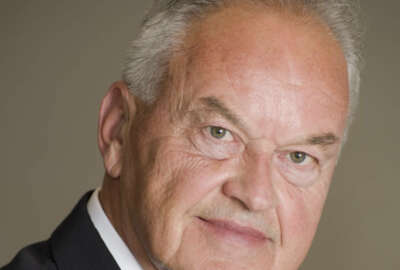
Pentagon offers ‘long overdue’ phased retirement to civilian workforce
The Defense Department announced Tuesday that members of its civilian workforce can now seek phased retirement from their positions, a concept that’s received...
The Defense Department announced Tuesday that members of its civilian workforce can now seek phased retirement from their positions, a concept that’s received little attention from federal agencies until now.
DoD, which employs nearly one-third of the non-postal federal workforce, is the largest agency to offer phased retirement, and could restore governmentwide confidence in the program.
Retirees who sign up for the program agree to work part-time at their posts while receiving half of their salary and half of their accumulated retirement annuity. During the transition, outgoing federal workers mentor employees seeking to take over their workplace responsibilities.
Peter Levine, the acting Under Secretary of Defense for Personnel and Readiness, outlined DoD’s phased retirement policy in a memo released Tuesday. The plan affects retirement planning for:
- Employees of the military departments.
- Employees of the Office of the Secretary of Defense.
- Employees of the Chairman of the Joint Chiefs of Staff and the Joint Staff.
- Combatant commands.
- Employees of the Office of the Inspector General.
- Defense agencies.
- DoD field activities.
- All other DoD components.
The memo states that phased retirement, while voluntary, must be agreed upon by both the prospective retiree and the DoD component. Workers must have at least a “fully successful” score on their last performance rating to be eligible.
Once approved, phased retirees must work half their full-employment hours, and dedicate at least 20 percent of that time to mentoring their successor.
Federal workers under the Civil Service Retirement System (CSRS) or the newer Federal Employees Retirement System (FERS) are both eligible for phased retirement after 30 years of service at age 55, or 20 years of service if they’re 60 or older. They must also have worked full-time for the last three years.
The National Active and Retired Federal Employees Association called the DoD’s announcement “long overdue.”
“Since phased retirement became law four years ago, NARFE’s phones have rung off the hook with calls from federal employees wondering when phased retirement will be available at their agencies,” Richard Thissen, president of NARFE, said in a statement. “For many other federal employees, however, this news will add to their frustration because the future of phased retirement at many agencies is still uncertain.
The Commerce Department recently announced that it will also implement a phased retirement program.
“I urge every federal agency to join DoD, Commerce and a handful of other federal agencies and embrace this innovative human resources tool,” Thissen said.
DoD’s announcement gives new life to the concept of phased retirement, which received plenty of attention and praise from government once signed into law in 2012, but few takers.
According to the Office of Personnel Management, only 80 workers across 15 federal agencies are currently on phased retirement. Another seven workers have completed their phased retirement period since 2014.
NASA currently has 17 employees on phased retirement, the most of any agency, followed by the Library of Congress and the Environmental Protection Agency, each at 14 employees.
The Social Security Administration announced to its workforce in August 2015 that it wouldn’t seek implementing phased retirement anytime in the foreseeable future.
President Barack Obama in mid-2012 signed into law the provision creating phased retirement, but it took OPM until 2014 to finalize the regulations.
Some have blamed low participation on OPM for dragging its heels on the phased retirement roll out, but Jeff Neal, senior vice president for ICF International and a former chief human capital officer at the Homeland Security Department, wrote in January that the concept, while sound on paper, just hasn’t appealed to the federal workforce.
“When we are looking at government reform ideas, it is critical that we actually think about whether we can actually implement them and there is really a market for them,” Neal wrote. “It is becoming apparent that there is not a market for phased retirement. It is looking more and more like it is the New Coke of civil service reform, an idea that seemed great, but never found a market.”
Paige Hinkle-Bowles, the deputy assistant secretary of Defense for Civilian Personnel Policy, told Federal News Radio in August 2015 that DoD had been developing its phased retirement policy.
Copyright © 2024 Federal News Network. All rights reserved. This website is not intended for users located within the European Economic Area.
Jory Heckman is a reporter at Federal News Network covering U.S. Postal Service, IRS, big data and technology issues.
Follow @jheckmanWFED
Related Stories




